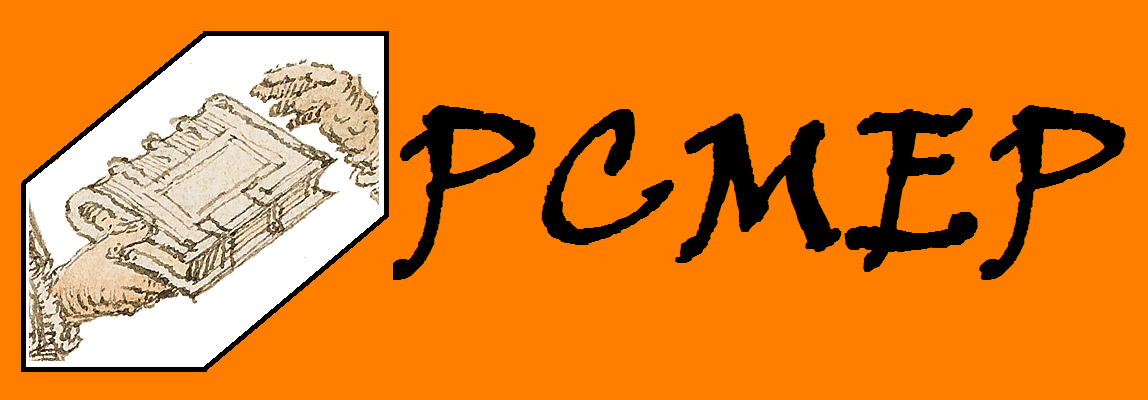The Parsed Corpus of
Middle English Poetry (PCMEP)
PCMEP Text Information
All is but a Phantom
Back to PCMEP texts
About the text:
About the edition and manuscript base:
About the file:
Other:
| Text name: | All is but a Phantom |
| Alternative names: | Al es Bot a Fantum; All is but a phantom that we with fare |
| Content: | The Middle English poem All is but a Phantom is a moral, didactic work that laments the futility of worldly wealth and the transient nature of human life. All earthly pursuits are illusory ("fantoms"). Instead, the reader is admonished to give their money to charity and focus on good deeds to prepare for divine judgment. |
| Genre/subjects: | monition, lamentation, transitoriness of life, death, grave, doom, memento mori theme |
| Dialect of original composition: | Northern The poem features rhymes on a that would have been impossible south of the river Humber, where rounding of long a to long o had occurred (e.g., care : sare 'care ' : 'sore' ll. 6-7). It includes structures with the finite verb after a fronted constituent but in front of a subject pronoun, creating verb-second patterns. This pattern with pronominal subjects is typical of Northern Middle English texts (Kroch & Taylor 1997). 'As black as himself, he will make the alike' (l. 52) It abounds in typically Northern verbal inflections in -s (e.g., 3rd person singular he that maste hordes 'he who hoards the most' l. 7, 2nd person singular þou wenes 'you expect' l. 76, plural bathe ligges 'both rest' l. 14). |
| Date of original composition: | 1300-1400 All is but a Phantom could have been in existence as early as the beginning of the fourteenth century and might have been composed as late as its sole surviving, early fifteenth century manuscript witness. Several other texts included in the manuscript were first written between the first and third quarter of the fourteenth century, (e.g. Ywain and Gawain, c. 1325-50, the Gospel of Nicodemus, c. 1340, 11 Poems by Laurence Minot, 1333-52), which increases the prior probability that the poem discussed here originates from a similar time. 5 instances of sentential negation with not vs. 3 examples of ne are also well compatible with a time of origin around the middle of the fourteenth century. Since the word imagine is attested only after 1350 (with one exception) according to the online version of the Middle English Dictionary, the poem has been placed in PCMEP period 3 (1350-1420) rather than 2b (1300-1350). |
| Suggested date: | 1350 |
| PCMEP period: | 3 (1350-1420) |
| Versification: | |
| Index of ME Verse: | 189 (IMEV), 189 (NIMEV) |
| Digital Index of ME Verse: | 339 |
| Wells: | 7.43 |
| MEC HyperBibliography: | Al es bot |
About the edition and manuscript base:
| Edition: | Hall, Joseph. 1895. 'Short Pieces from MS Cotton Galba E.ix.' Englische Studien 21. 201-4. |
| Manuscript used for edition: | London, British Library, Cotton Galba E.9, f. 48v. |
| Online manuscript description: | British Library, Explore Archives and Manuscripts Archives de littérature du moyen âge (item 3) |
| Manuscript dialect: | |
| Manuscript date: | s. xv-in "The manuscript […] belongs to the earlier part of the fifteenth century, probably to the reign of Henry V [1413-1422]" (Wright 1859: 58, footnote 2). "The handwriting of the MS. is of the first twenty years of the fifteenth century" (Hall 1887: viii). "The MS. is written in a fine large hand (or hands) of the first half of the fifteenth century" (Hulme 1907: xxii). The online version of the Middle English Dictionary lists the manuscript date as "a1425." For slightly different views, see the list of scholars mentioned by Hall (1887: viii, footnote 1). |
About the file:
| File name: | M3a.AlBotFantum |
| ID: | AlBotFantum,x.y.z: x=page, y=line, z=token number |
| Word count: | 892 (includes 2 emendated pronouns, and a 4-word Latin title) |
| Token count: | 72 |
| Line count: | 94 |
Other:
| General notes: | Another edition of the poem can be found in Horstmann (1896: 457-8, item III). |
| Remarks on parses: |
References
Hall, Joseph. 1887. The Poems of Laurence Minot. Oxford: Clarendon Press. (available online)
Hall, Joseph. 1895. 'Short Pieces from MS Cotton Galba E.ix.' Englische Studien 21. 201-9. (available online)
Horstmann, Carl. 1896. Yorkshire Writers. Volume 2. London: Sonnenschein. (available online)
Hulme, William H. 1907. The Middle English Harrowing of Hell and Gospel of Nicodemus. EETS e.s. 100. Berlin: Asher & Co. (available online)
Kroch, Anthony & Taylor, Ann. 1997. 'Verb Movement in Old and Middle English: Dialect Variation and Language Contact.' In: Kemenade, Ans van & Vincent, Nigel (eds.) Parameters of Morphosyntactic Change. Cambridge: Cambridge University Press. 45-68.
Wright, Thomas. 1859. Political Poems and Songs relating to English History: Composed during the Period from the Accession of Edward III to that of Richard III. Volume 1. London: Longman, Green Longman, and Roberts. (available online)
